Once upon a time, root cellars were the only way people had to preserve their food. These wonderful cold-storage areas became less common when refrigerators became affordable. Houses were no longer automatically built with a root cellar beneath them or nearby.
A root cellar is still a great way to store fruits and vegetables though, especially when you need to store more than you have room for indoors. They will also keep fruit and vegetables fresh without electricity. If your house doesn’t have one you can still take advantage of “nature’s ice box.” All it takes is a shovel, a little elbow grease, and a barrel.
Backyard Mini Root Cellar – Materials Needed
Building your own modern mini root cellar will only take a few hours. You will need the following:
- Shovel
- Barrel (galvanized steel or plastic)
- Drill and screws or hammer and nails
- Straw
- Rocks
- Plywood
How to Build a Mini Root Cellar
First you will have to dig a hole in the ground, taking into consideration the dimensions of the barrel and the rocks you’ll put underneath it. After you dig the hole, make sure the top of the barrel is at the freeze line or below.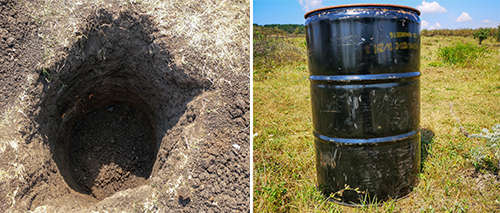
Place the barrel in the hole. Add your fruits and vegetables, put straw between them like you can see in the pictures, and then close the lid.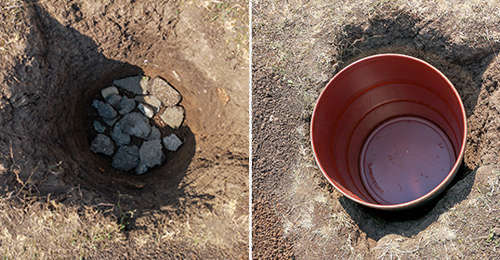
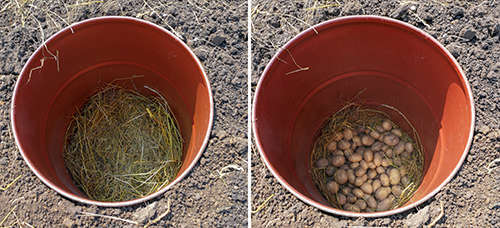
Do not use the same root cellar for both fruits and vegetables. They should not be stored together within the same barrel, even if they are separated with straw. Fruits give off ethylene, which will cause vegetables to ripen and rot. It also causes potatoes to sprout. Here you have a list of vegetables that store well together within the same barrel at 32—40°F (0—4°C) at 90—95% humidity. You can also find the length of time they can be stored for:
- Beets: 3—5 months
- Brussels sprouts: 3—5 weeks
- Cabbage: 3—4 months
- Carrots: 4—6 months
- Cauliflower: 2—4 weeks
- Celery: 2—3 months
- Endive: 2—3 weeks
- Kale: 10—14 days
- Leeks: 1—3 months
Do not store damaged vegetables, but do leave them dirty. Just brush off most of the dirt. Do not rinse them or wash them. Use any damaged fruits and vegetables right away. Bacteria and fungus will quickly take hold on bruised or cut produce.
Store onions in a cool, dry root cellar with temperatures of 32—35°F (0—1°C) and 60—70% humidity after you shock them. Shock them by bending or snapping the green stems one month before harvest. You can store peas with onions.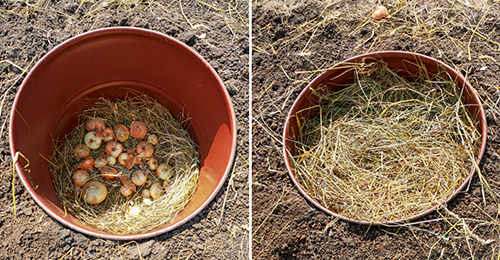
Regular potatoes and sweet potatoes need to be stored separately. Regular potatoes should be kept at 38—40°F (3—4°C) and 80—90% humidity. Sweet potatoes should be kept at 50—55°F (10—13°C) with 80—90% humidity.
Dried beans need to be kept cool and dry, at temperatures between 32—50°F (0—10°C) 60—70% humidity.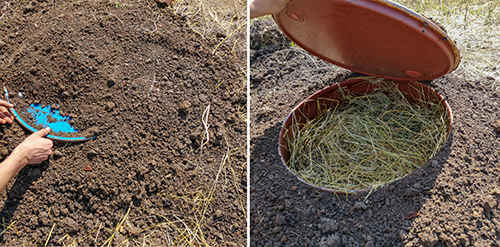
Pumpkins and squash can be stored together in a warm, dry root cellar. Temperatures should be kept between 50—55°F (10—13°C) with 60—75% humidity.
Store apples and pears in a cold, moist root cellar with temperatures of 32—40°F (0—4° C) in 80—90% humidity.If you notice your fruits or vegetables beginning to shrivel, the humidity level is too low. Try misting the layers of straw with a little water to increase moisture levels. If there is a little condensation or moisture on the fruits or vegetables, you will need to reduce the humidity in the root cellar. Replace the straw with fresh, dry straw, and make sure there isn’t standing water beneath the barrel. You may have to move the barrel if there is standing water in the hole.
After you add all your vegetables, just put the barrel’s cap back in place. Then add some soil over the top of it.
I Wish I’d Known This Before Building A Root Cellar
The Hurricane-Proof Shelter You Can Build In Your Backyard (Video)
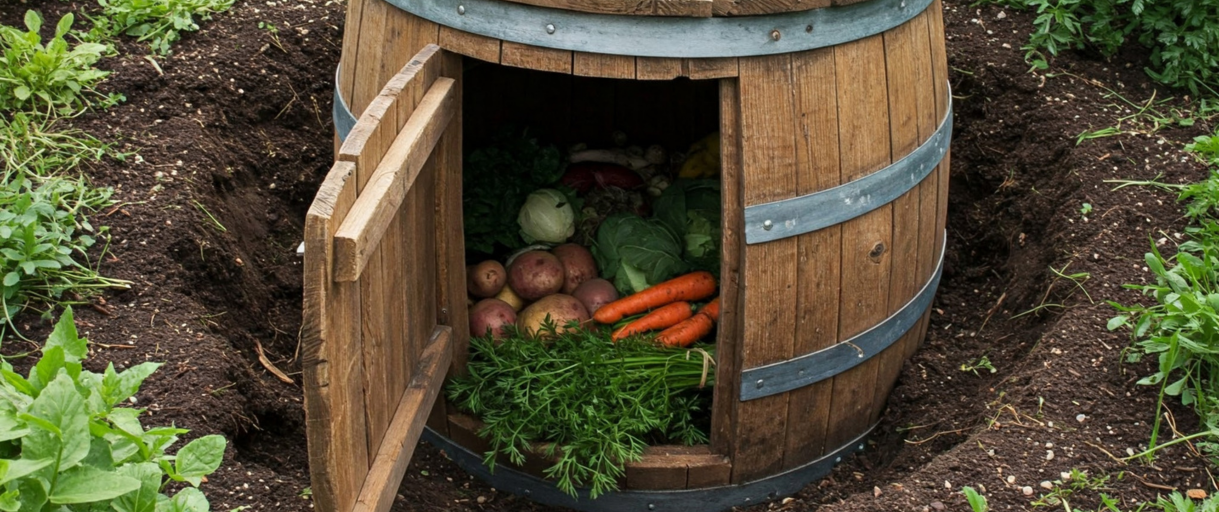


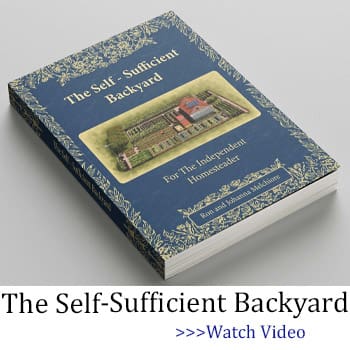

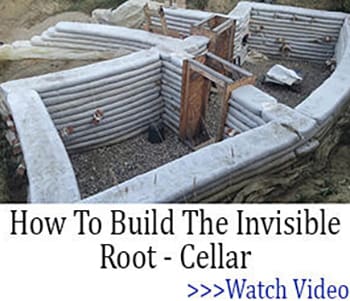
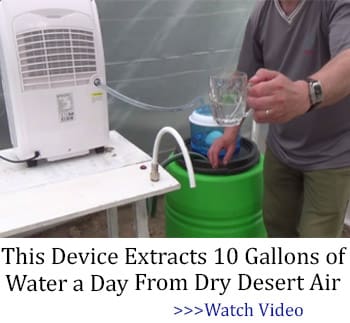
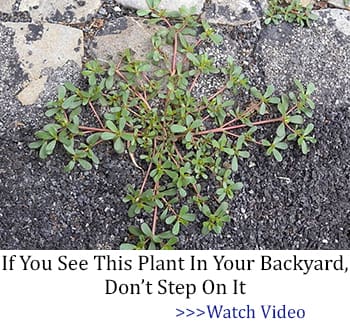
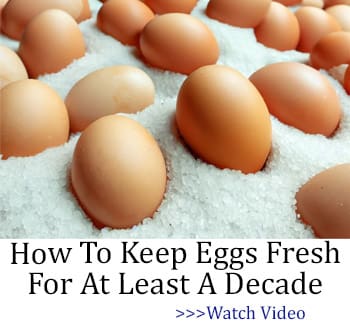



What’s the hammer, nails, drill, and screws for?
Is there a forum or facebook group where we can ask questions about these projects?
A forum would be helpful! So many questions I have, such as “how does one determine the freeze line?” And “how do you control and monitor temperature and humidity in these barrel root cellars or even in traditional root cellars?”
How do you secure the lid from raccoons and bears?
I’ve been interested in building a root cellar like the kinds that my wife’s relatives have had. But these all require a lot of digging since they are actually rooms constructed deep beneath the earth with doors. This method of using a 55 gallon drum will not work around here, where the frost level is at least six feet and generally buried at seven feet. It might work by cutting out the botom of one 55 gallon drum and somehow driving it into another one. The prospect of trying to dig out a seven foot hole doesn’t appeal to me, but it might work. What I’ve tried is storing root vegetables in my greenhouse. The greenhouse can easily get into the 80s degree F even with temperatures zero or below if it is sunny. So I’ve tried super insulating the vegetables. It sort of works. The big problem is humidity. It’s too low.
Would this work at all In Southern California? I don’t believe it gets cold enough or humid enough. Is there another option to help?